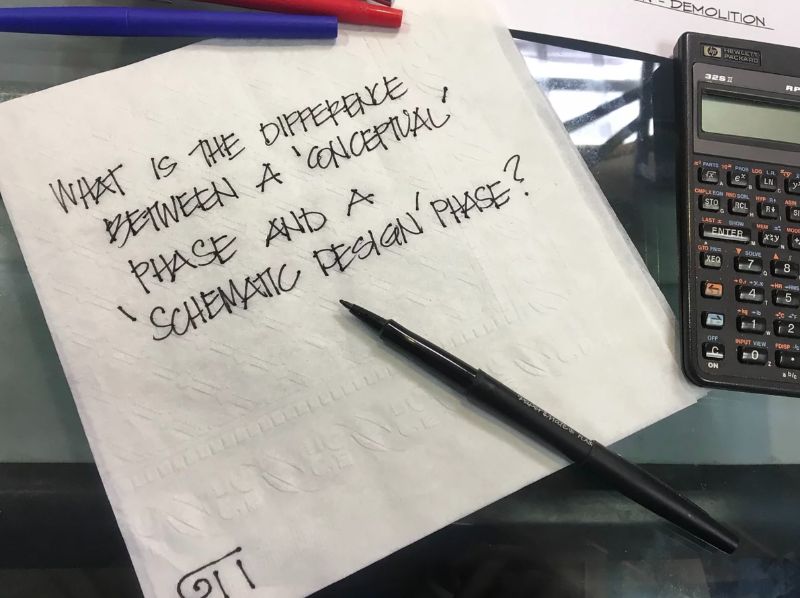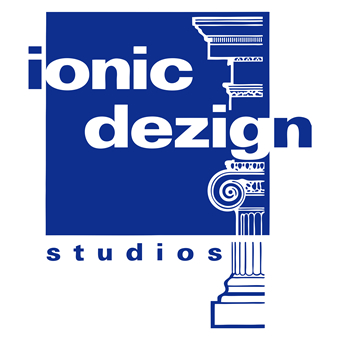Ask IONIC is a napkin series of questions that we often hear from our client and others that may assist those who are also seeking answers.
No question is dumb… just the ones you don’t ask.
We hope these will help you understand our industry just a little better so you can make informed decisions on your project.
Information that leads to knowledge is the key to success.
The Benefits of Design-Build Construction
What business wouldn’t want to choose a building process that offers opportunities to save money, to reduce construction time, to allow customization, to optimize quality, and to streamline the entire experience?
So before you answer that question… don’t you think you should understand what design-build means?
Unfortunately it means different things to different people. There are pros and cons with everything. IONIC has worked with hundreds of clients over our many years in business, and finding the key advantage that each project requires is the right process our clients should utilize.
Choosing the right process should be the best for the client… not everyone else.
We hear a lot of suggestions from many individuals that have very little experience in project management processes trying to influence how a project should be managed.
Question: Would you listen to your financial adviser if he has only made a few investments? What experience does he have? What is his track record? Exactly! Today, we’re pleased to be regarded as an industry expert in determining our clients’ most suitable process for their specific project.
Not all processes are created equal! Neither are the projects!
This blog post will highlight a process loaded with many intrinsic benefits. Known as “Design-Build,” its cost efficiency, time savings, and collaborative nature have made it popular among clients for everything from commercial and municipal buildings to sports facilities, churches, restaurants, manufacturing plants, medical facilities, and more.
1. The Design-Build Team Selection Process
To begin with, the design-build process has the ability to be much more fluid than traditional design-bid-build. (If it’s approached the right way. The problem is that too many times it isn’t done the right way) In design-bid-build, the owner hires an architect to design a set of plans then puts the job out to bid. Instead of long gaps of time and (remember, time is money) between different phases of a project being completed by different participants, each member of a design-build team works together from the start and during every step of the process to help move things along quickly and more smoothly.
In truth, the idea that the design-bid-build process is entirely antiquated and riddled with inefficiency and waste is not true. Remember what we said at the beginning: it’s a process, an option to consider for your particular set of circumstances. Some contractors do not approach it as a team effort but rather that the architect is a luxury (I take great exception to this). The right architect has their unequivocal talents no different than the contractor does. It’s a team. A quarterback can be great, if he has his lineman, but can’t achieve anything at all without quality teammates.
The idea that any contractor can build anything is just as wrong as saying that any architect can design anything. They all have their specialties and experiences. Architects shouldn’t be lumped into the same pile together any more than all contractors should be grouped together with the “two guys and a pick-up truck.” That’s why the selection process is a critical step. Our goal at this stage is to ensure that you find the team whose goals for success are as cohesive as possible. Design-build can allow you to vet potential candidates based on experience, then dig into the details of your specific project.
2. The Pre-Construction Phase
This design-build selection process often overlaps with the next phase—the pre-construction phase—since the design-build team selected will likely have already done a significant amount of research and analysis of the construction site and other particulars of the project. Conceptual drawings and vivid visions are produced in the form of conceptual floor plans, exterior elevations, renderings and even a conceptual site plan.
Our goal at this stage is to provide the image that everyone on the team can focus toward without question. A sort of dream board without all of that cutting and pasting.
Notice that you’d have the potential to save time even at the very beginning of the project. The key to this savings was that you found the right team with right linemen (the contractor) and the right quarterback (the architect).
This pre-construction step is critical. Attention to detail is paramount. This is when the design team will learn about the owner’s business, including goals, challenges, budget, and overall vision for the project and put that into a vision. The contractor or build team will ask as many questions as necessary, so as to get a solid picture of what is expected to be delivered. Our clients tell us that they find this phase invaluable. This is when our experience can help you fine-tune plans based on what we have learned from more than 40 years in architecture.
3. The Evaluation Phase
Efficiencies, added benefits, cost reductions, and enhancements have grown out of this collaborative, team-focused process. During this phase, the owner, architects, engineers, contractors, and other consultants work together as a team to assess existing structures, electrical systems, HVAC systems, operational necessities, and more to determine what needs to be done before construction starts. These assessments allow for a thorough analysis of the construction site, which helps the design-build team maximize efficiency throughout the project.
At this stage, we view our work—together with you and the entire team—as an excellent opportunity to assess areas for cost savings and optimized productivity, while also meeting functional requirements. We’ll leave no stone un-turned when it comes to suggesting ways to save time, money, or logistical hassles. This process helps us deliver a product that suits your needs and schedule.
4. Ready…Set…
The overall project vision is established during this phase, and design development drawings are produced. Pricing estimates can be established during this phase as well, and a firm budget is provided. In addition, we’ll have a timeline for you so that you understand start and end dates, and every critical point in between.
Our goal at this stage is to ensure that you find the construction experience as disruption-free as possible.
Bottom line: IONIC has often experienced that fewer design changes and construction mistakes are made due to miscommunication when design-build is employed. The increase in collaboration enables customization and innovation, which results in less time and fewer materials being wasted at each stage of the project.
The result?
A higher quality deliverable—with no surprises—ultimately resulting in increased satisfaction by the owner.
Let us know if we can help you on your next project and find the riht solution for your needs.








 om scratch…there is no “Easy Button”!
om scratch…there is no “Easy Button”!


